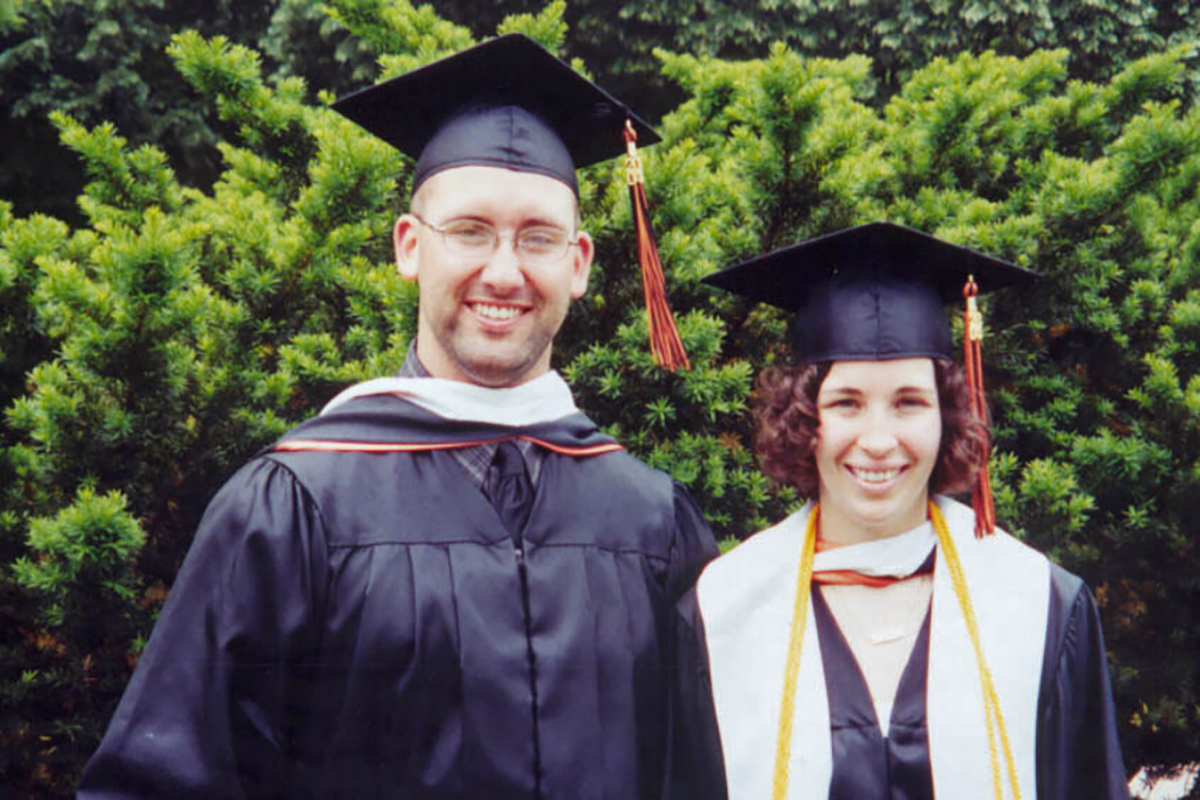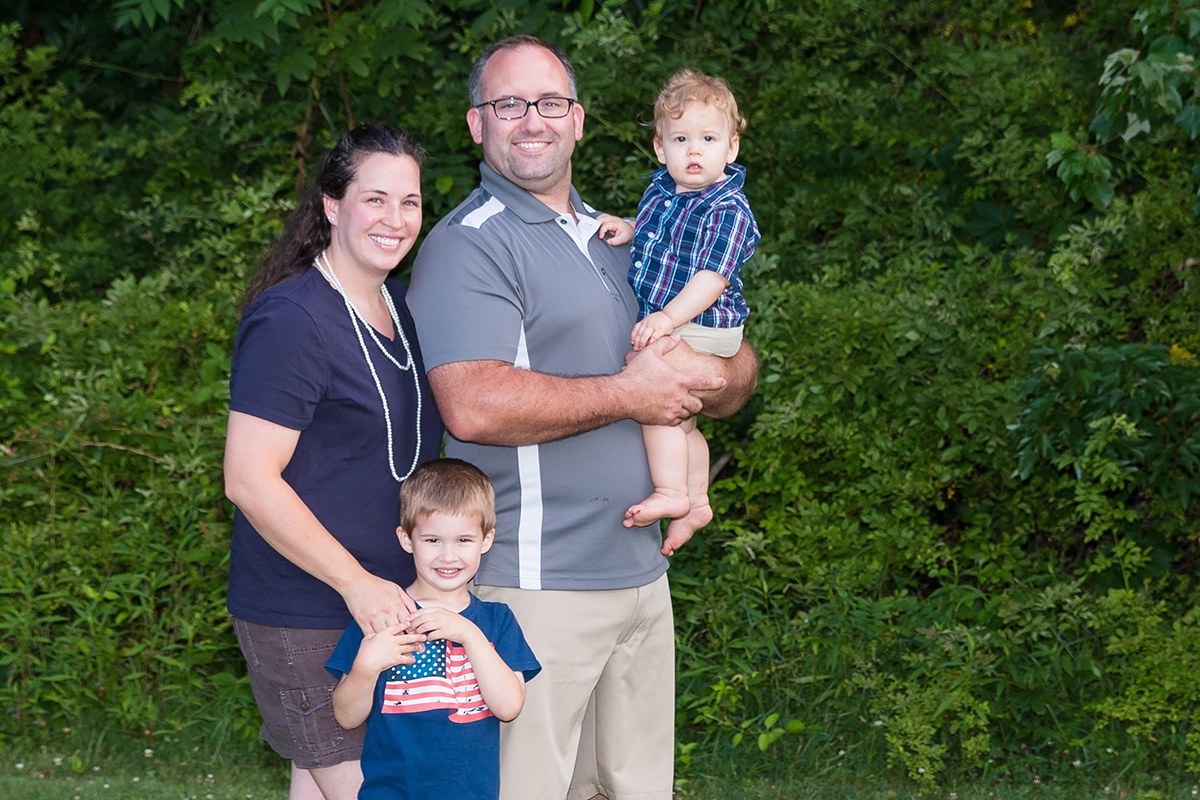How This Couple Survived 2 Rounds of Unemployment and Still Paid Off $105K

Kate Nesi developed an aversion to credit cards working as a bank teller as a teenager.
But her savvy spending habits didn’t prevent her from getting into debt.
She graduated from college in 2004 with just $10,000 in student loans. But she soon took out another $32,000 to complete a one-year master’s program in library science.
“I thought, ‘My first year of work should be $40,000, so hopefully I can pay it off quickly,’” she said.
Telling the story, she laughed.
The reality was that in 2008, when she married her husband, Chris, she had $42,000 in debt. Chris had close to $40,000 of his own loans from college, and owned a house together they’d purchased for $200,000.
They both ended up with salaries in the $40,000 range — she as a school librarian, he as a teacher.
When the economy crashed in 2008, the value of their house dropped dramatically.
As public school educators, Kate and Chris already had to save throughout the year to cover expenses during the summer months when school was out. And every spring, they’d worry about whether they’d have jobs in September, or whether budget cuts would eliminate their positions.
Nesi paid off her own student loans in summer 2010 — just months after she and Chris learned they wouldn’t have jobs for the coming school year.
How They Paid Down Debt Despite 2 Bouts of Unemployment

The Nesis had plans to pay off their debt, but being unemployed forced them to cut back further than they expected.
Reading Get Rich Slowly helped Kate realize she didn’t have to make a lot of money to make substantial moves for her financial future.
The couple had already dumped their expensive cell phone plans in 2008, opting instead for prepaid TracFones and Google Voice numbers. (The setup still works for them; it costs about $200 each year instead of $2,000.)
Kate admits she was against getting rid of cable at first. Could she live without “The Real Housewives” and the evening news? But after a while, she realized she could survive without it.
They also cut back on energy usage. “My husband used to turn on lights like an airplane was about to land on our house,” Nesi said.
She and Chris bonded over their lifestyle changes, but they lost a lot of friends. Their peers wanted to go out instead of opening a bottle of wine at home. Many stopped coming over, because they didn’t have cable to watch big sporting events.
“[Being frugal] was not something everyone was doing,” Kate said. “We were too scared to talk about it because of how people treated us. It was a weird, shameful thing then.”
Kate and Chris found themselves out of work twice: first in the summer of 2010 before finding jobs for the upcoming school year and again in December 2011. The second time, Kate was pregnant, and they had only saved enough for one month of maternity leave. Luckily, it only took Chris three months to find work — but it happened after their son had arrived and spent time in a neonatal intensive care unit.
The couple had already sold their books, movies and games. “This go-round, we had nothing left to sell,” Nesi said.
They cut their food budget to $40 per week for her and Chris, and took advantage of dinners at family members’ houses when they could. “We weren’t good cooks at the time,” she confessed. “We asked for [grocery store] gift cards at the holidays.”
The Nesis put student loan repayment on hold in December 2011 but resumed their quest soon after. They finished paying off their student loans in summer 2012. Between their student loans and two car loans for Chris, the family paid off $105,000 in debt between 2009 and 2013.
They didn’t have an emergency fund to fall back on at that time. Their philosophy for loan repayment was, “Just keep sending them everything you have.”
The couple had one more obstacle before they could really start thinking about their financial future: their house.
How This Frugal Mom and Dad Make Room in the Budget for Fun

Chris and Kate bought their house about two years before they got married, taking out a $195,000 mortgage to live in a neighborhood they soon realized wasn’t right for them. When the economy crashed, the value of the house dropped below what they owed.
They considered refinancing, but they knew they’d have to wait until they had paid off a considerable portion of the mortgage to get a lower interest rate.
They listed the house in 2013 and started saving aggressively, hoping a buyer would pay close to what they owed on the mortgage. The house sold for $160,000, and between the leftover portion of their mortgage and closing costs, the Nesis paid $30,000 to unload the house they didn’t love.
Now, Nesi shares her family’s mortgage payoff process on her blog. They’ve paid off about $24,000 so far, and as of May 2018, they’ve shaved 10 years off their payoff date. Chris and Kate each have salaries in the $60,000 range and use the income from their second, part-time jobs — he as a college instructor, and she as a college librarian — toward extra mortgage payments.
Chris has a side hustle as a podcast editor and producer. Kate’s side hustle is a photography business that she started in 2009.
But they still find ways to set money aside for fun. The rule in her household: “Side-hustle money is your own money,” Nesi said. “We have allowances [from the main budget], and then we have our own money.”

The frugal mom hopes to instill in her children the same habits she and Chris have embraced. Her sons, 6 and 2, see her sitting down to pay bills. Instead of buying more toys, they might all spend more time in the garden, building something in the garage or taking long bike rides.
But it’s still a long haul to get their finances set up for the future.
“Sometimes it doesn’t feel like I’m getting anywhere,” she said, “but when I look back, I see, ‘Oh, I guess we’re making headway.’” Now, they have more than an emergency fund; they also have investments and some equity in their home.
They’re even going on their first vacation as a family this year. “We haven’t gone on vacation since our honeymoon,” she said.
Lisa Rowan is a senior writer at The Penny Hoarder.
- Search for less expensive alternatives to your cell phone and cable plans.
- Be mindful of your energy usage.
- Ask for gift cards in lieu of traditional presents.
- Search for ways to trim your grocery budget.
- Build a side hustle and use those earnings as 'fun money.'


















